BERLIN: A VW spokesman says the German automaker’s supervisory board is checking whether it can demand damage claims from former VW CEO Martin Winterkorn in connection with the company’s diesel emissions cheating scandal.
Michael Brendel tells German news agency dpa “the investigation has been going on for quite some while and is conducted independently from the authorities’ investigation.”
German newspaper Frankfurter Allgemeine Sonntagszeitung reported Sunday that Winterkorn could lose his property in connection with the company’s investigation.
Winterkorn, 70, was indicted Thursday in the United States on charges stemming from the company’s diesel emissions cheating scandal.
Volkswagen has admitted to programming its diesel engines to activate pollution controls when being tested in government labs and turning them off when on the road.
Winterkorn has denied any knowledge of the scheme.
VW board eyes damage claims against former CEO Winterkorn
VW board eyes damage claims against former CEO Winterkorn

- Volkswagen has admitted to programming its diesel engines to activate pollution controls when being tested in government labs and turning them off when on the road
- Former VW CEO Martin Winterkorn denies any wrongdoing, saying he was not aware of the issue
Williamson to lead as New Zealand announce T20 World Cup squad
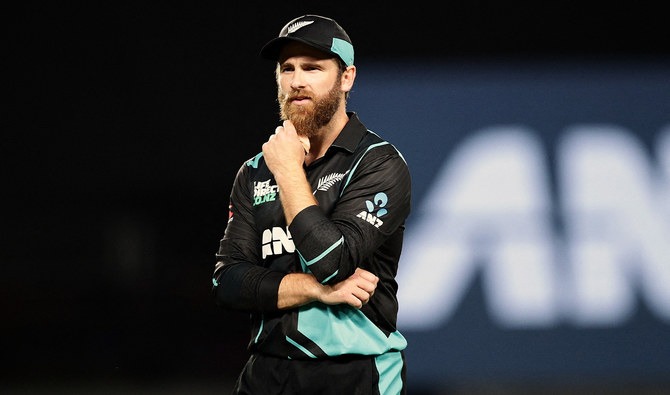
- Veteran New Zealand seamer Tim Southee will play in his seventh T20 World Cup in June
- Kane Williamson’s squad have reached the semifinals of the last three T20 World Cups
WELLINGTON, New Zealand: Veteran seamer Tim Southee will play at his seventh Twenty20 World Cup after being included Monday in an experienced New Zealand squad for the tournament starting June 1 in the Caribbean and United States.
Kane Williamson will make his sixth T20 Cricket World Cup appearance and will captain the team at the tournament for the fourth time. He is warming up for the tournament in the Indian Premier League.
Southee’s regular new ball partner Trent Boult has been included to play at his fifth world T20, despite no longer having a central contract with New Zealand Cricket.
The 35-year-old Southee is New Zealand’s leading wicket-taker in T20 internationals with 157 and is also the Black Cap’s top wicket-taker at T20 World Cups with 29, five more than Boult.
The New Zealand selectors have sprung a minor surprise by selecting Matt Henry among four specialist seamers and ahead of Ben Sears, who was named as a traveling reserve. Henry, 32, will be playing at a T20 World Cup for the first time and has made only 20 previous appearances for New Zealand in the short format.
“Matt has worked exceptionally hard on his skills across the phases of a T20 game to come back into selection consideration,” head coach Gary Stead said.
Lockie Ferguson is the other specialist seamer in New Zealand’s 15-man squad. Adam Milne and Kyle Jamieson were unavailable because of injury.
Allrounder Rachin Ravindra also will play at a T20 World Cup for the first time, after being one of the breakout stars of last year’s 50-over World Cup. He adds to New Zealand’s spin options along with Mitchell Santner, Michael Bracewell, Ish Sodhi and Glenn Phillips.
“Rachin has made every post a winner in the past 12 months and it was exciting to see him continue that trajectory over the summer in the T20 format against Australia,” Stead said.
Wicketkeeper Tim Seifert has been omitted, meaning Devon Conway and Finn Allen will share the gloves. Conway is still recovering from a thumb injury sustained in New Zealand’s T20 series against Australia last month while Allen recently has been sidelined with a back injury.
Thirteen of the 15 squad members took part in New Zealand’s last tour to the West Indies in 2022. Six have played in the Caribbean Premier League.
“We expect the venues in the West Indies to offer quite varied conditions and feel we’ve selected a squad with the scope to adapt to those conditions,” Stead said.
New Zealand has reached the semifinals of the last three T20 World Cups, losing at that point to India in 2016 and Australia in 2022. The Black Caps lost to Australia in the final in 2021.
New Zealand’s first match is against Afghanistan at San Fernando, Trinidad and Tobago on June 8. They meet co-host West Indies at the same venue on June 12.
The tournament final will be played at Kensington Oval, Barbados on June 30.
Pakistan begins week-long campaign to vaccinate 24 million children against polio
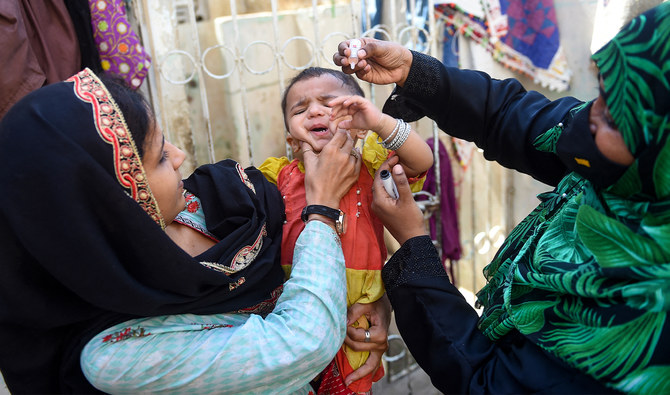
- Campaign is being held in 91 districts of Sindh, Punjab, Khyber Pakhtunkhwa, Balochistan and Islamabad
- Pakistani polio vaccinators and security teams guarding them have often been attacked by militant groups
ISLAMABAD: Pakistani authorities kicked off a week-long campaign to vaccinate 24 million children against poliovirus in 91 selected districts on Monday, the state-run Radio Pakistan reported, as Islamabad tries to eliminate the potentially fatal disease from the country.
Pakistan and Afghanistan are the only two countries in the world where the poliovirus, which causes paralysis and can be a life-threatening disease, is endemic.
“The campaign is being held in ten districts of Punjab, 24 districts of Sindh, 26 districts of Khyber Pakhtunkhwa (KP), 30 districts of Balochistan, and the federal capital Islamabad,” Radio Pakistan said, adding that 24 million children under the age of five would be administered the vaccine in these districts.
Dr. Malik Mukhtar Ahmed Bharath, coordinator to the prime minister on National Health Services, said the government is committed to ensuring that all children are protected from poliovirus.
“Poliovirus has been detected in multiple sewage samples in the country in recent months which means this virus remains a serious threat to children’s wellbeing,” Dr. Bharat was quoted as saying by the state-run Associated Press of Pakistan (APP) on Sunday.
He said the only way to protect children from the disease is to vaccinate them against it. “We are sending polio teams to your homes, so make sure to open your door to vaccinators and get your child vaccinated,” he added.
Dr. Shahzad Baig, coordinator of the National Emergency Operations Center for Polio Eradication described it as a “critical campaign” being held in districts with a high risk of poliovirus spread.
“We have detected the virus in over 31 districts this year, which is why we are continuing to implement regular vaccination campaigns in all high-risk districts to ensure that children have the immunity to fight off polio infection,” he said.
Pakistan’s efforts to contain polio have often been met with opposition, especially in the country’s northwestern KP province, where militants have carried out attacks against vaccinators and the security teams guarding them.
Many believe in the conspiracy theory that polio vaccines are part of a plot by Western outsiders to sterilize Pakistan’s population.
Pakistani masses’ doubts regarding polio campaigns were exacerbated in 2011 when the US Central Intelligence Agency set up a fake hepatitis vaccination program to gather intelligence on former Al-Qaeda chief Osama bin Laden.
Afghans who made Pakistan home to escape war now hide from deportation
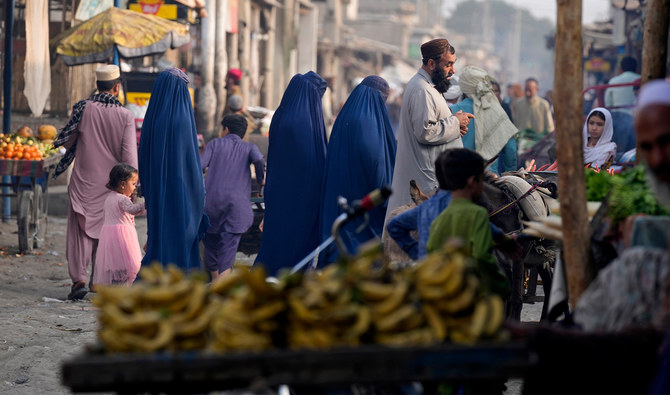
- Pakistan has forcibly deported some 600,000 undocumented Afghans since October 2023
- Afghans in hiding find it difficult to earn money, rent accommodation or get medical help
KARACHI, Pakistan: Born and raised in Pakistan to parents who fled neighboring Afghanistan half a century ago, an 18-year-old found himself at the mercy of police in Karachi who took his cash, phone and motorbike, and sent him to a deportation center.
Scared and bewildered, he spent three days there before he was sent back to Afghanistan, a place he has never been to, with nothing but clothes on his back.
The youth is one of at least 1.7 million Afghans who made Pakistan their home as their country sank deeper into decades of war. But they’ve been living there without legal permission, and are now the target of a harsh crackdown on migrants who Pakistan says must leave.
Some 600,000 Afghans have returned home since last October, when the crackdown began, meaning at least a million remain in Pakistan in hiding. They’ve retreated from public view, abandoning their jobs and rarely leaving their neighborhoods out of fear they could be next for deportation.
It’s harder for them to earn money, rent accommodation, buy food or get medical help because they run the risk of getting caught by police or being reported to authorities by Pakistanis.
The youth, who had been working as a mechanic in an auto shop since he was 15, spoke on condition of anonymity for fear of arrest and deportation.
He has applied for the same documentation that his family has, but he won’t get it. Pakistan isn’t issuing paperwork for Afghan refugees or their children.
“My life is here. I have no friends or family in Afghanistan, nothing,” the young man told The Associated Press. “I wanted to come back (to Pakistan) sooner, but things had to calm down first,” he said, referring to the anti-migrant raids sweeping the country at the time.
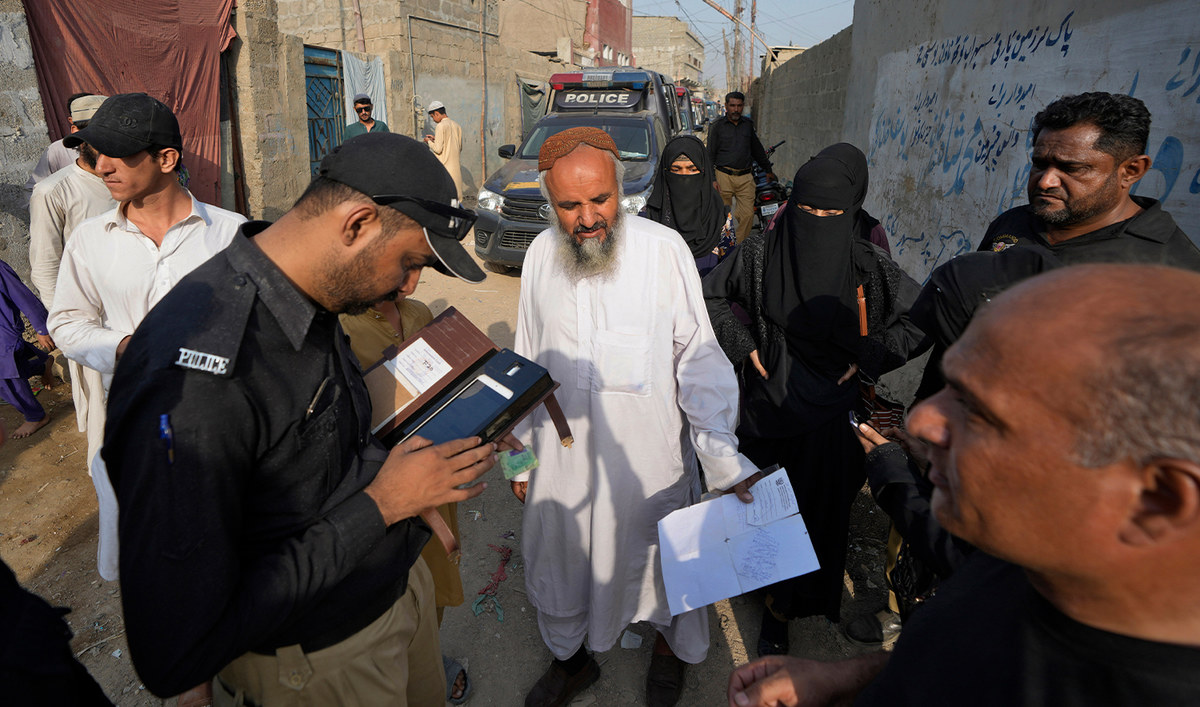
Taliban authorities gave him 2,500 afghanis ($34) once he entered Afghanistan to start a new life. They dispatched him to northeastern Takhar province, where he slept in mosques and religious schools because he knew nobody to stay with. He passed his time playing cricket and football, and borrowed other people’s phones to call his family.
Six weeks later, he traveled from Takhar to the Afghan capital, Kabul, then to eastern Nangarhar province. He walked for hours in the dark before meeting up with human smugglers hired by his brother in Pakistan. Their job was to get him to Peshawar, the capital of Pakistan’s northwest Khyber Pakhtunkhwa province, for the price of $70.
He is relieved to be reunited with his family. But he is vulnerable.
Police have daubed numbers on homes in his neighborhood to show how many people live there and how many have documentation. Hundreds of Afghan families have fled the area since the operation began. There are fewer people to hide among.
Such neighborhoods in Karachi are easily home to tens of thousands of Afghans. But they have no drainage systems, health care or education facilities. There are few women on the streets, and those who venture out wear burqas, often the blue ones more commonly seen in Afghanistan.
Lawyer Moniza Kakar, who works extensively with the Afghan community in Karachi, said there are generations of families with no paperwork. Without it, they can’t access basic services like schools or hospitals.
Afghans were already under the radar before the crackdown, and rumors abound that Pakistan wants to expel all Afghans, even those with documentation. Pakistan says no such decision has been made.
In another Karachi neighborhood with a mostly Afghan population, people scatter when police arrive, disappearing into a maze of alleys. A network of informants spread news of the visits.
Kakar despairs at the plight of Afghans who remain in Pakistan. “Sometimes they don’t have food so we appeal to the UN to help them out,” she said. To earn money or get medical help, they would have previously traveled from such neighborhoods into the heart of Karachi, but they can’t afford these journeys anymore. They’re also likely to be arrested, she added.
Some show Kakar their ID cards from the time of Gen. Zia Ul-Haq, the military dictator whose rule of Pakistan coincided with the 1979 Soviet invasion of Afghanistan. “They wonder why they don’t have citizenship after 40 years. They don’t share their location. They don’t go out. They live in property rented in someone else’s name.”
There are children who were born in Pakistan who have grown up and have children of their own. “The children don’t have any identity paperwork. All of them have an undecided future,” said Kakar.
Syed Habib Ur Rehman works as a media coordinator at the Afghanistan Consulate General in Karachi. He spends a lot of time in these communities.
“There are empty homes, empty shops,” Rehman said. “Markets are empty. The Pakistanis we know don’t agree with what is happening. They say they have spent a good life with us. Their business has gone down because so many Afghan families have left.”
The Afghans interviewed by the AP had different reasons for never securing their status. Some said they were overseas working. Others didn’t have time. Nobody thought Pakistan would ever throw them out.
Mohammad Khan Mughal, 32, was born in Karachi and has three children. Before the crackdown started, the Afghan ran a tandoor business. Police told him to close down.
“My customers started complaining because they couldn’t buy bread from me,” he said. He and his family went to the southwestern city of Quetta in Baluchistan province to escape the raids.
He returned to Karachi a few days later, and has no intention of leaving.
“This is my home,” he said, with pride and sadness. “This is my city.”
Pakistani FM, Digital Cooperation Organization’s secretary-general discuss economic cooperation in Riyadh
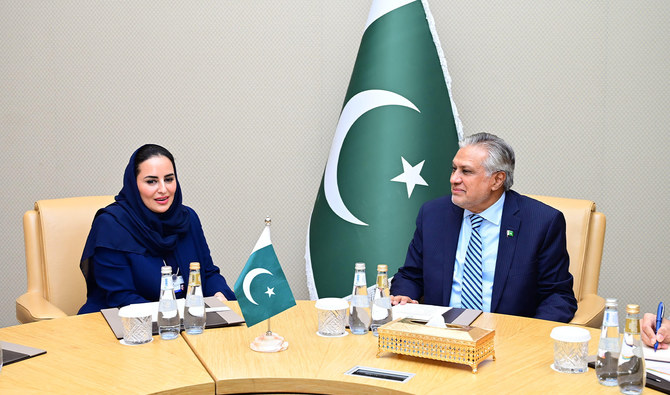
- Digital Cooperation Organization is an inter-governmental body that seeks to bridge digital gap in member states
- Foreign Minister Dar meets DCO secretary-general at sidelines of World Economic Forum meeting in Riyadh
ISLAMABAD: Pakistan’s Deputy Prime Minister and Foreign Minister Ishaq Dar and Digital Cooperation Organization’s (DCO) Secretary-General Deemah AlYahya on Sunday resolved to continue their joint collaboration and cooperation for economic development, the foreign ministry said in a statement.
The DCO is an inter-governmental body established in 2020 which is dedicated to achieving social prosperity and growth of digital economic. The DCO aims to achieve this by unifying the efforts of its member states to advance digital transformation and promote common interests of member states. DCO member states include Pakistan, Qatar, Saudi Arabia, Rwanda, Kuwait, Morocco, Nigeria, Oman, The Gambia, Ghana, Greece, Jordan, Bahrain, Bangladesh, Cyprus and Djibouti.
AlYahya is a Saudi digital economy expert and the founding secretary-general of the organization since her election to the post in April 2021. As DCO secretary-general, AlYahya is responsible for connecting heads of state, government ministers and private sector digital economy leaders to bridge the digital gap in member states.
She called on Foreign Minister Dar at the sidelines of the World Economic Forum’s Special Meeting in Riyadh on Sunday, Pakistan’s Ministry of Foreign Affairs (MoFA) said.
“The Deputy Prime Minister and Foreign Minister of Pakistan and the SG DCO affirmed their resolve to continue close collaboration and cooperation for the economic development and digital transformation of Pakistan, Saudi Arabia and other DCO member states,” MoFA said.
AlYahya recounted her visit to Pakistan earlier this month and spoke of the country’s “great potential” for technological advancement and digital transformation of its economy, MoFA said. “She emphasized that as founding member of DCO, Pakistan brings great value to the organization and has a significant role to play in its rise and progress,” it added.
Dar stressed the need for DCO member states to achieve capabilities in emerging technologies in the fast-evolving tech landscape, MoFA said. “In this connection, he appreciated DCO for providing the suitable platform to its member states for their digital advancement,” the statement said.
AlYahya separately posted about her “great meeting” with Dar on the social media platform X.
“With 64 percent of the population below 30 years old, many of whom are actively involved in the freelance industry, it is critical to ensure we undertake all collaborative efforts that will enable an ecosystem which lets the youth thrive and prosper in the new digital landscape,” she wrote on X.
China’s robotic spacecraft headed for moon to carry payload from Pakistan
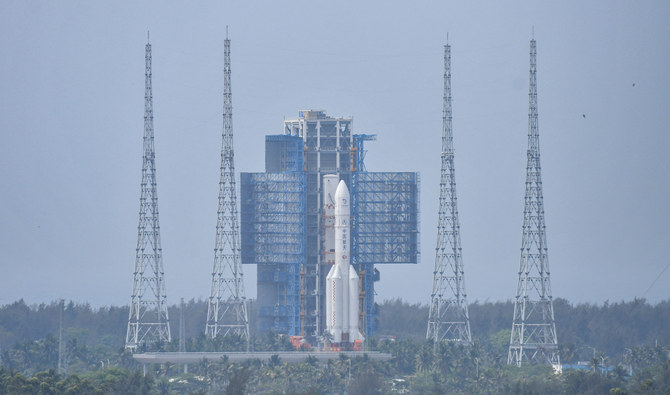
- China will send a robotic spacecraft in coming days on round trip to moon’s far side in first of three missions
- Chang’e-6 spacecraft will carry payloads from countries such as France, Italy, Sweden and Pakistan
BEIJING: China will send a robotic spacecraft in coming days on a round trip to the moon’s far side in the first of three technically demanding missions that will pave the way for an inaugural Chinese crewed landing and a base on the lunar south pole.
Since the first Chang’e mission in 2007, named after the mythical Chinese moon goddess, China has made leaps forward in its lunar exploration, narrowing the technological chasm with the United States and Russia.
In 2020, China brought back samples from the moon’s near side in the first sample retrieval in more than four decades, confirming for the first time it could safely return an uncrewed spacecraft to Earth from the lunar surface.
This week, China is expected to launch Chang’e-6 using the backup spacecraft from the 2020 mission, and collect soil and rocks from the side of the moon that permanently faces away from Earth.
With no direct line of sight with the Earth, Chang’e-6 must rely on a recently deployed relay satellite orbiting the moon during its 53-day mission, including a never-before attempted ascent from the moon’s “hidden” side on its return journey home.
The same relay satellite will support the uncrewed Chang’e-7 and 8 missions in 2026 and 2028, respectively, when China starts to explore the south pole for water and build a rudimentary outpost with Russia. China aims to put its astronauts on the moon by 2030.
Beijing’s polar plans have worried NASA, whose administrator, Bill Nelson, has repeatedly warned that China would claim any water resources as its own. Beijing says it remains committed to cooperation with all nations on building a “shared” future.
On Chang’e-6, China will carry payloads from France, Italy, Sweden and Pakistan, and on Chang’e-7, payloads from Russia, Switzerland and Thailand.
NASA is banned by US law from any collaboration, direct or indirect, with China.
Under the separate NASA-led Artemis program, US astronauts will land near the south pole in 2026, the first humans on the moon since 1972.
“International cooperation is key (to lunar exploration),” Clive Neal, professor of planetary geology at the University of Notre Dame, told Reuters. “It’s just that China and the US aren’t cooperating right now. I hope that will happen.”
SOUTH POLE AMBITIONS
Chang’e 6 will attempt to land on the northeastern side of the vast South Pole-Aitkin Basin, the oldest known impact crater in the solar system.
The southernmost landing ever was carried out in February by IM-1, a joint mission between NASA and the Texas-based private firm Intuitive Machines.
After touchdown at Malapert A, a site near the south pole that was believed to be relatively flat, the spacecraft tilted sharply to one side amid a host of technical problems, reflecting the high-risk nature of lunar landings.
The south pole has been described by scientists as the “golden belt” for lunar exploration.
Polar ice could sustain long-term research bases without relying on expensive resources transported from Earth. India’s Chandrayaan-1 launched in 2008 confirmed the existence of ice inside polar craters.
Chang’e-6’s sample return could also shed more light on the early evolution of the moon and the inner solar system.
The lack of volcanic activity on the moon’s far side means there are more craters not covered by ancient lava flows, preserving materials from the moon’s early formation.
So far, all lunar samples taken by the United States and the former Soviet Union in the 1970s and China in 2020 were from the moon’s near side, where volcanism had been far more active.
Chang’e-6, after a successful landing, will collect about 2 kilograms (4.4 pounds) of samples with a mechanical scoop and a drill.
“If successful, China’s Chang’e-6 mission would be a milestone-making event,” Leonard David, author of “Moon Rush: The New Space Race,” told Reuters. “The robotic reach to the Moon’s far side, and bringing specimens back to Earth, helps fill in the blanks about the still-murky origin of our Moon.”











